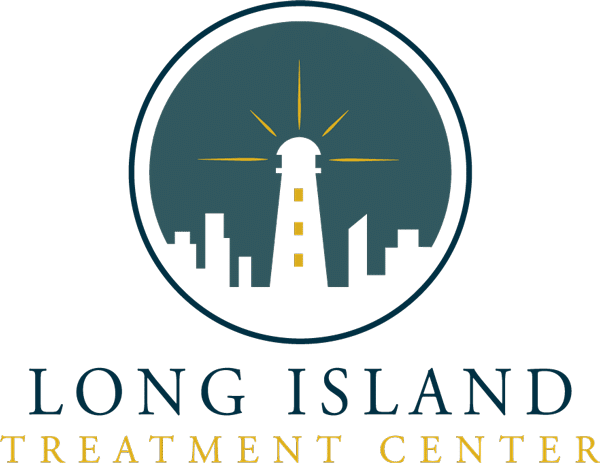It’s no secret that NYC has a drug addiction problem. A high percentage of NY residents struggle with addiction to opioids, illicit drugs, and alcohol. Sadly, a fatal drug overdose occurs approximately every 3 hours in New York.
The levels of drug abuse in the state continue to rise. Opioid-related deaths grew by almost 300% between 2010 and 2020.
However, it’s never too late to seek help. In today’s article, we’ll tell you everything you need to know about drug rehab in New York. We’ll also tell you about common types of drugs abused in the city and explain the drug rehabilitation process.
Let’s dive into the details right away.
Table of Contents
Understanding Addictions
The definition of addiction is not having control over taking, doing, or using something. Addiction isn’t only about drugs. Some people are addicted to gambling, shopping, playing games, and many other things.
Any kind of addiction can be harmful to one’s health. It can also lead to many problems in work, relationships, and daily life.
Common Types of Drugs Abused and Addictions in New York
New York is the fourth most populated state in America, making it a target for many drug traffickers. Let’s check out some common types of drugs abused in NY.
1. Opioids
New York has an opioid crisis. In 2022, there were nearly 4,000 cases of opioid-related deaths in New York. The numbers have been rising since the disruptions of the COVID-19 pandemic.
Overall, there’s a huge rise in opioid overdoses. The number grew by almost 300% between 2010 and 2020.
Fentanyl is one of the most commonly abused opioids. It’s a potent synthetic opioid, and it’s mostly not expensive.
Traffickers mix fentanyl with other drugs to drive addiction and make more profit. So, some people might not know they’re taking fentanyl until they’re addicted. Not to mention how dangerous it is to mix unknown drugs.
Heroin, oxycodone, hydrocodone, and methadone are among opioids that are commonly abused. Generally, opioids cause a euphoric effect.
Overdosing on opioids can lead to respiratory arrest, coma, and death. Sadly, opioid withdrawal symptoms aren’t easy. Therefore, it’s always best to seek a reliable drug rehab center.
2. Cocaine
Cocaine is a powerful stimulant that’s highly abused in New York. Cocaine is typically trafficked as a powder, but there’s also a form of processed cocaine that looks like rocks or crystals, known as crack.
The drug is highly addictive and extremely dangerous. It increases the heart rate, blood pressure, and body temperature. In addition, it increases alertness and aggressiveness. Cocaine also can cause users to take risks, which leads to injuries.
More importantly, cocaine users can experience unexpected emergencies, like heart attacks or strokes. Sudden death is common among cocaine abusers.
Overall, most cocaine-related cases are a result of respiratory arrest or cardiac arrest. Unfortunately, cocaine abuse numbers in NY are higher than they are nationwide.
3. Alcohol
Alcohol abuse is the third leading cause of preventable death in the country. Alcohol abuse is a major problem in NY. In 2019, 18.2% of NY residents reported binge drinking in the past month.
Moreover, excessive alcohol use causes over 4,000 annual deaths in the state. Alcohol abuse can take many forms, like binge drinking and heavy drinking.
All alcohol abuse forms are associated with an increased risk for many life-threatening diseases and chronic conditions. In addition, alcohol abuse has been linked to an increased risk for different types of cancer.

How Drug Rehab in New York Works
Drug rehabilitation is a process that helps people overcome their addiction and return to their normal lives. It involves a wide range of individualized programs designed to help users break free from their addictions.
Some drugs can cause tough withdrawal symptoms that users can’t tolerate. Luckily, drug rehab centers can provide patients with well-structured plans and guidance to get through the symptoms. Additionally, rehab centers might provide users with medications that help them overcome withdrawal symptoms.
Drug rehab doesn’t end after achieving sobriety, as aftercare is an essential part of rehabilitation. Aftercare programs help users stay sober and return to their normal lives.
Types of Drug Rehab Treatment Plans
Substance abuse treatment can depend on the type of drug and the degree of intensity. There are many types of drug rehab treatment plans.
Typically, they’re designed to address the user’s physical and psychological issues related to their substance abuse.
Let’s check out some common drug rehab treatment plans.
1. Detoxification Treatment Plans
A detox plan is usually the first step in the treatment. The program focuses on relieving withdrawal symptoms and helps the users get rid of the substances in their system.
A medically managed program can help stabilize the patient and overcome withdrawal symptoms. Typically, the program can last anywhere from a few days to weeks, depending on the severity of the case.
2. Inpatient and Residential Rehab
Inpatient and residential rehab programs are suitable for medium to severe cases. The patients typically receive supervised treatment and structured 24/7 care plans to overcome their addiction.
Inpatient programs can last anywhere from a few weeks to months. In some cases, they may be followed by outpatient rehab.
3. Outpatient Rehab
Outpatient rehab programs allow users to stay at their homes while receiving the treatment they need. Typically, users will need to attend around nine hours of treatment per week, depending on the case and the facility.
That allows many patients to go on with their lives and careers. Some outpatient rehab programs offer night and weekend sessions
that can be suitable for anyone with professional responsibilities that may prevent them from attending inpatient rehab. However, outpatient rehab is mostly for low- to medium-severity cases.
Drug Rehab Aftercare
Achieving sobriety is a huge accomplishment, but the treatment doesn’t stop after being free of drugs. Drug rehab aftercare is a critical part of addiction recovery.
Aftercare is a type of treatment given to people recovering from substance abuse after achieving initial sobriety. It can significantly lower the chances of relapses. That said, here are some types of aftercare programs:
1. 12-Step Programs
The 12-step programs are often conducted in anonymous group settings. Alcoholics Anonymous (AA) and Narcotics Anonymous (NA) are examples of 12-steps programs.
What’s good about these programs is that they give people access to confidential, safe environments. That can help them develop more effective strategies for coping with their situation and managing their condition.
2. Outpatient Aftercare Programs
Outpatient treatment provides people in recovery with access to individual therapy sessions and group counseling. The outpatient sessions are conducted with drug addiction therapists and trained counselors.
In group counseling, patients get to listen and share their experiences in a group setting. That can help them build critical social skills in a safe, supportive setting.
Does Drug Rehab Work for Everyone?
Professional rehab is the most effective way to treat drug addiction, according to the National Institute on Drug Abuse (NIDA). If you, one of your family members, or a loved one is struggling with substance use disorder, you should always seek professional help.
It’s always best to do your research and choose a licensed, reputable rehab center!
In Conclusion
New York has high levels of addiction and drug overdose deaths. Drugs like opioids and cocaine are commonly abused in NY.
Drug rehab in New York can help anyone struggling with drug addiction. The patient will receive an individualized treatment plan, depending on the severity of the case.
There are different types of treatment plans, like inpatient and outpatient programs. Inpatient or residential programs are suitable for severe cases, as the patients typically receive 24/7 care and support.
On the other hand, outpatient programs are for cases that aren’t severe. They allow patients to stay at home while receiving all the care and counseling they need.

